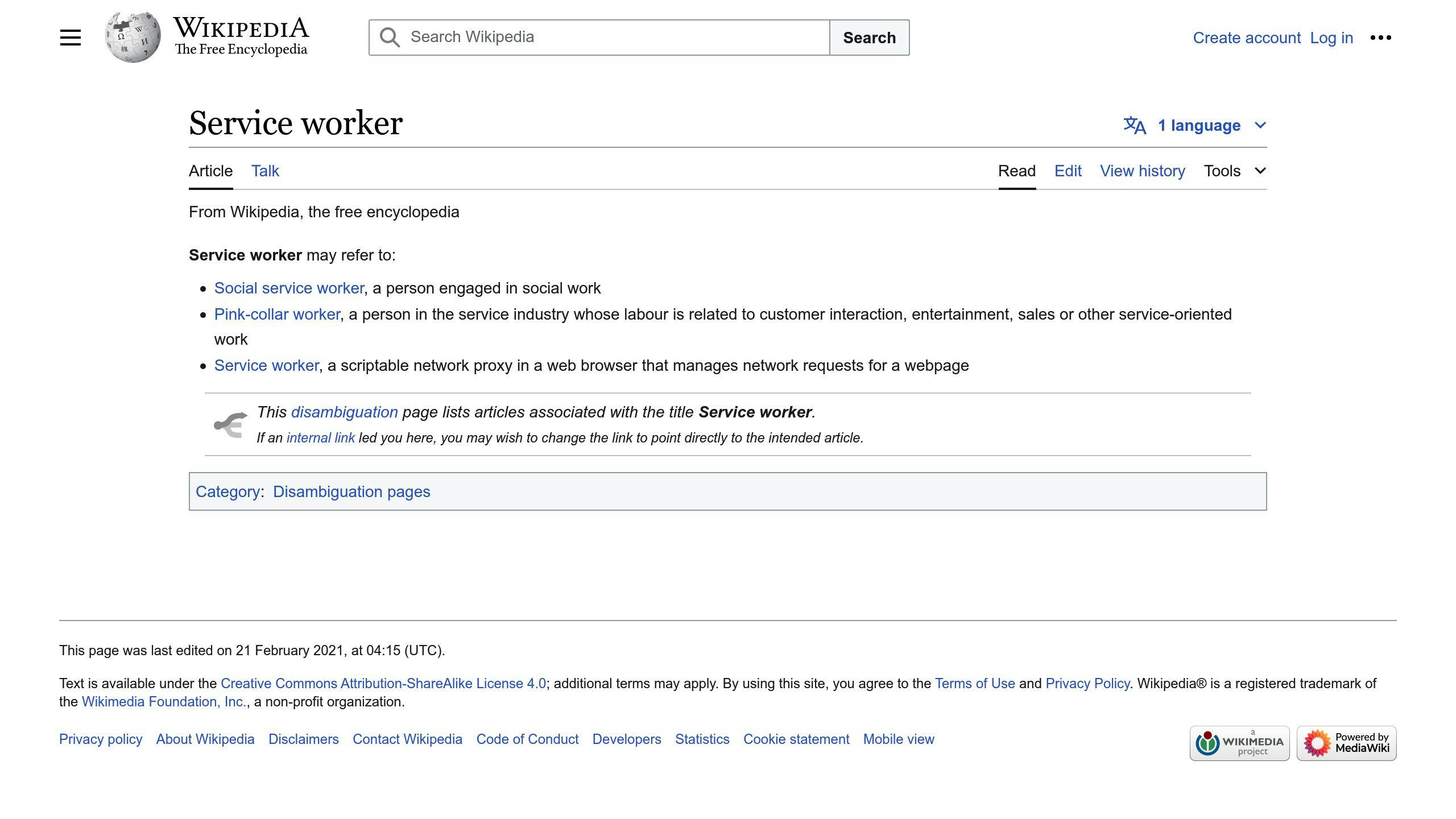Updating service workers is crucial for delivering the latest features, bug fixes, and performance improvements to users of Progressive Web Apps (PWAs). Here's a concise overview of the key points:
Why Update Service Workers
ReasonDescriptionDeliver Latest Features & Bug FixesPush new features, improvements, and fixes to usersAvoid Outdated AssetsEnsure all assets are up-to-date and compatibleRespect User Bandwidth & StorageCache only necessary assets, delete obsolete ones
Triggers for Service Worker Updates
TriggerDescriptionContent ChangesChanges in HTML, CSS, JavaScript files, or other assetsBug Fixes & Performance ImprovementsUpdate to fix issues or enhance performancePrevent Operational DuplicationUnregister old worker, register new one for seamless transition
Checklist for Updating Service Workers
StepDescriptionCheck Update RequirementsVerify conditions for an update are metUse the Update MethodReplace current worker with a new oneEnsure Users Get the UpdateUse caching, versioning, and notification mechanismsMonitor Update EventsListen for updatefound and statechange eventsNotify Users of New VersionUse APIs like Badging and Web NotificationsHandle Update ErrorsImplement error handling and feedback mechanismsRemove Old Service WorkersRemove old caches and outdated service workersTest the Updated Service WorkerConfirm successful installation and operation
By following this structured approach, you can ensure a smooth transition to the new service worker version, providing a better experience for your users and maintaining a competitive edge in the digital landscape.
Related video from YouTube
Triggers for Service Worker Updates
When it comes to updating a service worker, there are several triggers that can initiate the process. These triggers are crucial to ensure that your Progressive Web App (PWA) remains current and functional.
Changes in Content
TriggerDescriptionChanges in HTML, CSS, JavaScript files, or other assetsThe browser detects changes in the content and triggers an update to the service worker.
Fixing Bugs and Improving Performance
TriggerDescriptionBug fixesUpdate the service worker to fix issues and ensure a seamless user experience.Performance improvementsTrigger an update to ensure users can take advantage of performance enhancements.
Preventing Operational Duplication
To prevent operational duplication, unregister the old service worker and register the new one, ensuring a seamless transition.
By understanding these triggers, you can ensure that your PWA remains up-to-date and functional. In the next section, we will explore the checklist for updating service workers, providing a step-by-step guide to ensure a smooth update process.
sbb-itb-8abf120
Checklist for Updating Service Workers

When updating a service worker, follow a structured approach to ensure a smooth transition. This checklist outlines the key steps to take when updating a service worker, providing specific advice and actions to avoid common pitfalls.
Check Update Requirements
Before updating a service worker, verify that all conditions for an update are met. Check for changes in content, bug fixes, or performance improvements that require an update.
Use the Update Method
Use the update() method from the ServiceWorkerRegistration interface to replace the current worker with a new one if changes are detected. This method returns a promise that resolves with a new ServiceWorkerRegistration object if the update is successful.
Ensure Users Get the Update
To ensure all users receive the updated service worker version as soon as possible without necessitating an application restart, use strategies like caching, versioning, and notification mechanisms.
Monitor Update Events
Listen for updatefound and statechange events as indicators of a new service worker installation and readiness for activation. Use the skipWaiting() method to force activation if necessary.
Notify Users of New Version
Notify users about available updates using APIs like Badging and Web Notifications. Provide user-friendly methods for notifying users.
Handle Update Errors
Implement error handling and feedback mechanisms during the update process to catch and address any issues promptly. Inform users about any errors and provide corrective action.
Remove Old Service Workers
Remove old caches and outdated service workers using methods like caches.delete(). Implement cache management strategies to stay within browser storage limits and ensure a smooth update process.
Test the Updated Service Worker
Test the updated service worker in different scenarios to confirm successful installation and operation. Ensure the latest version is active and functioning correctly.
By following this checklist, you can ensure a smooth and successful update process for your service worker, providing a better experience for your users.
StepDescriptionCheck Update RequirementsVerify conditions for an update are metUse the Update MethodReplace the current worker with a new oneEnsure Users Get the UpdateUse caching, versioning, and notification mechanismsMonitor Update EventsListen for updatefound and statechange eventsNotify Users of New VersionUse APIs like Badging and Web NotificationsHandle Update ErrorsImplement error handling and feedback mechanismsRemove Old Service WorkersRemove old caches and outdated service workersTest the Updated Service WorkerConfirm successful installation and operation
Summary: Smooth Service Worker Updates
To ensure a seamless service worker update process, follow a structured approach. This involves:
Key Steps
StepDescriptionCheck Update RequirementsVerify conditions for an update are metUse the Update MethodReplace the current worker with a new oneEnsure Users Get the UpdateUse caching, versioning, and notification mechanismsMonitor Update EventsListen for updatefound and statechange eventsNotify Users of New VersionUse APIs like Badging and Web NotificationsHandle Update ErrorsImplement error handling and feedback mechanismsRemove Old Service WorkersRemove old caches and outdated service workersTest the Updated Service WorkerConfirm successful installation and operation
By following this checklist, you can guarantee a smooth transition to the new service worker version, providing a better experience for your users.
Benefits of a Smooth Update Process
A well-managed update cycle benefits both users and the business. It allows you to:
- Deliver the latest features and bug fixes promptly
- Ensure your application remains competitive and secure
- Build trust with your users by demonstrating your commitment to providing a high-quality experience
By prioritizing the update process, you can minimize downtime, reduce errors, and ensure that your application remains available to users at all times. This, in turn, can lead to increased user satisfaction, loyalty, and ultimately, business success.
Remember, a smooth service worker update process is critical to maintaining a competitive edge in today's fast-paced digital landscape. By following the guidelines outlined in this article, you can ensure that your application remains up-to-date, secure, and user-friendly, ultimately driving business growth and success.
FAQs
How does a service worker detect a new version?
A service worker detects a new version by comparing the cached files with the resources coming from the network. This process is triggered when:
TriggerDescriptionNavigation to an in-scope pageThe browser checks for updates when a user navigates to a page within the service worker's scope.Functional events (push and sync)The browser checks for updates when functional events like push and sync occur.Calling register() with a different service worker URLThe browser checks for updates when the register() method is called with a different service worker URL.
The browser performs a byte-by-byte comparison to determine if the service worker has changed, and if so, installs the new version in the background.




.png)







